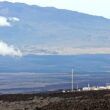A baffling agreement
July 21, 2015
The nuclear deal reached on July 14, 2015 between six world powers and Iran is baffling. It raises many important questions and leaves others unanswered. For example:
Why, if it is dangerous today for Iran to be two months away from a nuclear weapon—as Secretary of State John Kerry patiently explained in Congressional testimony last year—is it acceptable for Tehran to be in such a position 10 to 15 years from now?
Why does the deal undermine existing International Atomic Energy Agency (IAEA) authorities under the Additional Protocol by extending the timeline for inspecting suspect sites from 24 hours to 24 days—or more?
Why, after insisting in an April interview that Iran must come clean on what the IAEA calls the possible military dimensions of its program before a deal is completed, telling journalist Judy Woodruff, not once, but twice, “it will be done,” did Secretary Kerry agree to defer the issue to a future and uncertain resolution in December?
Why would Western negotiators have any confidence that this time Iran will provide a complete and correct declaration to the IAEA with respect to the possible military dimensions of its program, when it has serially failed to do so since 2011?
Why, given the trench warfare over every provision of the deal, the Supreme Leader’s rant that the agreement changes nothing with respect to Iran’s hostility toward the United States and Israel, and President Rouhani’s gloating about how favorable the deal is to his country, would anyone believe that the agreement provides anything more than a speed bump on the path to Iran’s nuclear ambitions?
Why is that speed bump a good trade for at least $150 billion in sanctions relief, access to international arms markets, and international blessing for Iran’s nuclear ambitions at the conclusion of the deal?
William H. Tobey
senior fellow
EXPERT COMMENTARY
Harvard's Belfer Center for Science and International Affairs













